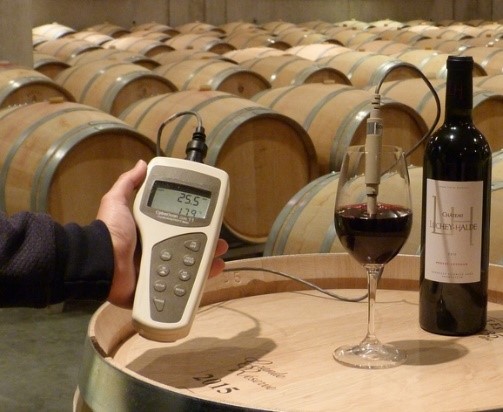Development of sensors and analytical methods
- Electrochemical and optical microsystems to study mitochondria
- Biosensing and bioenergy
- Sensing in complex liquid media
- Particles for drug delivery
Electrochemical and optical microsystems to study mitochondria
Mitochondria play major roles into diverse metabolic pathways (oxidative phosphorylation, calcium handling, redox signalling) and when defective, they lead to severe pathologies (myopathies, neurological disorders…). Consequently, novel methodologies are required to decipher mitochondrial activities and provide diagnosis tools. We are developing microsystems integrating electrochemical or optical sensors, or both combined in a single device. Electrochemical systems are based on microelectrode or nanoelectrode arrays. These allow to monitor the oxygen consumption or H2O2 production by mitochondria in response to OXPHOS activators and inhibitors. Optical systems are based on glass, PDMS and SiO2 substrates with microwell structures in which small populations of mitochondria are deposited. Mitochondria are monitored individually by fluorescence microscopy based on NADH, calcium or membrane potential dies. Overall, these different microsystems offer unprecedented resolution to assess single mitochondria activities, hetereogenity and dysfunctions in physio-pathological processes.

Left: Optical and electrochemical microsystems developed for the monitoring of mitochondrial activities.
Right: example of simultaneous detections of oxygen consumption and hydrogen peroxide release by isolated mitochondria.
Biosensing and Bioenergy
Different electrode architectures are developed and used for biosensing and biofuel cells. The challenge is miniaturization while reaching high analytical performances. For biosensors, we design electrochemical and combined electrochemical/optical sensors, which dimensions and structuration range from micro- to nanoscale. These ones are adapted to the size of the biological entity under study (tissue, single cell, membrane, isolated DNA). Individual microelectrodes are placed next to a neuro-secretory or cardiac cell to measure local fluxes of catecholamines, oxygen or hydrogen peroxide. This approach is combined to optical sensing in micro-optoelectrodes (see topic 2) to observe the biological objects at the sensor tip while detecting locally redox activities. For biofuel cells, the principle is to draw energy from physiological fluids to power biomedical devices. We develop micro-biofuel cells, in which the two electrodes are modified with enzymes: at the anode glucose is oxidized while oxygen is reduced at the cathode. Recently we have integrated such electrodes into an electronic chip designed to be powered by this miniaturized energy source. This work suggests a number of biomedical applications including skin-implanted glucose sensors.

Left: Electrochemical detection by a microelectrode on a single cardiac cell; Right: SEM image of a coaxial electrochemical cell.
Sensing in complex liquids
Our development of electrochemical sensors for small molecules involved in redox processes of living systems has led to diverse applications based on measurements in complex aqueous media, such as blood, skin hydrolipidic film or beverages. In particular, we are developing electrodes sensitive to antioxidants or reducing species (ascorbic acid, anthocyans …). Such species have been measured in usual beverages and especially in wines. Also, sulfur dioxide in its dissolved and chemically unbound forms is detected in wines since this species is the main antioxidant and antifungal chemical compound used in wine making. Measuring sulfites in such complex matrices is an analytical challenge and of high interest for wine industry. Dedicated modified electrodes and detection protocols have been developed and used successfully to monitor sulfite and pH in wines along different phases of wine making. This work is currently pursued in order to monitor other reducing agents used as food preservatives.

Development of methodologies and sensors for measuring reducing compounds in complex media, such as wine.
Particles for drug delivery
Hydrogels are biocompatible materials due to their high hydration degree. These porous structures can be used as drug delivery vehicles. Controlled released can be achieved by application of a stimulus or by degradation of the polymer matrix. In this purpose, we develop functionalized polysaccharide-based hydrogels and nanogels for the encapsulation of proteins and peptides[1] as well as hydrophobic hormones.[2]

Enzyme-triggered release of progesterone-loaded oil nanodroplets from a hyaluronic acid microgel






